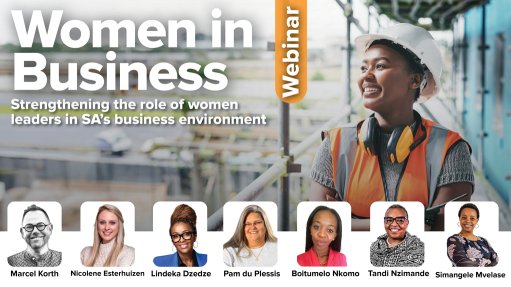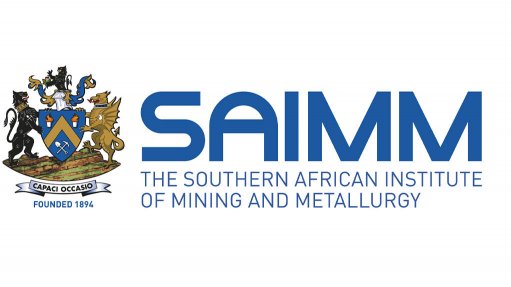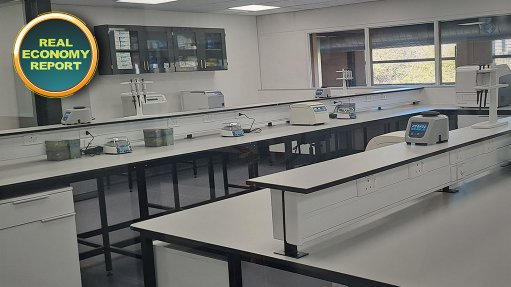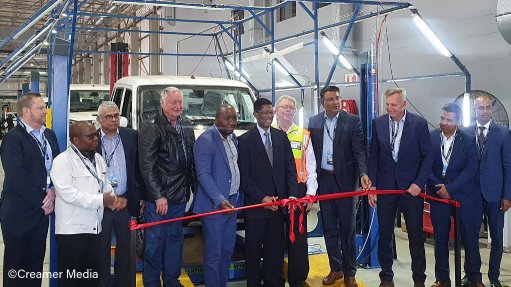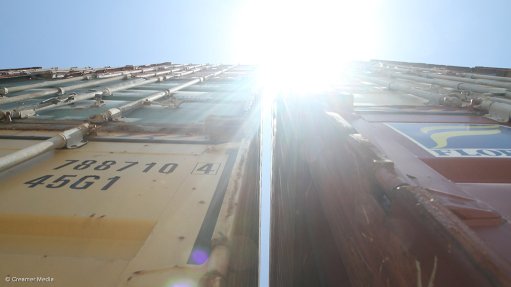Creating a Culture of Safety, Understanding and Mitigation of Environmental Risk in the Workplace
This article has been supplied and will be available for a limited time only on this website.
By: Andy Mizen - Senior Risk Consultant at Aon South Africa
In a world that’s becoming increasingly conscious of environmental impact, the risks facing businesses and their people - particularly those operating in high-impact industries - are growing. From the switch to and adoption of solar and wind power, to global conversations about sustainability, environmental issues are anything but peripheral concerns. They are central to how corporate companies are viewed, regulated and held accountable.
Environmental risks carry severe consequences that can strike at the heart of a business. A single oversight can trigger a cascade of issues, from litigation, regulatory fines to crippling reputational damage that undermines public trust and investor confidence. In more severe cases, these risks can lead to injury or loss of life, exposing a company to long-term liability. Implementing a robust environmental risk management strategy is not just about avoiding penalties - it’s about safeguarding the longevity of the business, protecting employees and the community, and maintaining a social license to operate.
Regulations You Can’t Afford to Ignore
In South Africa, the Occupational Health and Safety Act of 1993 lays out an employer’s duty to provide a safe workplace. This includes implementing written safety procedures, identifying and mitigating hazards and ensuring that safety responsibilities are assigned and upheld. Employers are also required to protect not only their staff, but anyone who may be affected by their operations.
International standards—particularly those in the UK and US—are often more stringent. For example, regulatory oversight in petrochemical operations in those regions typically demands a higher degree of technical rigour and safety assurance. Understanding and applying these global best practices and standards is essential for multinational companies, or any business aspiring to operate at world-class standards.
Lessons from Past Disasters
History has delivered stark reminders of what can go wrong at work when environmental risks are mismanaged:
- The Deepwater Horizon oil rig disaster in 2011 resulted in the death of eleven workers and spilt approximately five million barrels of oil into the ocean. The cost to BP—financially and reputationally—was enormous, and the company faced criminal charges, including manslaughter.
- Similarly, the Piper Alpha oil rig explosion in 1987, caused by a breakdown in permit-to-work procedures, led to 168 fatalities. The rig’s unsafe design and poor oversight led to a devastating tragedy and human toll, and decimated the company’s reputation.
These are not cautionary tales—they are harrowing case studies that underpin the necessity of stringent environmental and safety protocols, without fail or exception.
Key Risk Areas
- One area of heightened concern is asbestos management. South African law mandates strict controls, including advance notification to the Department of Labour, non-invasive visual inspections, worker inductions and the creation of an asbestos location register. Contractors must follow precise safety protocols, avoiding tools that generate dust and ensuring safe use and disposal of personal protective equipment (PPE). Liability for asbestos exposure can span decades, making long-term documentation and air quality monitoring essential.
- Wind power, while seen as environmentally-friendly, presents its own set of engineering and safety challenges. Blade and tower design must minimise risks such as aircraft collisions, ice accumulation or lightning strikes. Regular maintenance is crucial, as is fire suppression in substations and the installation of automatic shut-off devices to prevent mechanical overspeed or overheating.
- In sewage treatment operations, risks arise from both biological and mechanical sources. Workers can be exposed to airborne and liquid pathogens, toxic gases and dangerous confined spaces. Businesses must implement strict hygiene protocols, ensure proper training and PPE usage and maintain equipment regularly to prevent contamination of water sources. Emergency response planning is also a key part of responsible sewage management.
- Another hazardous substance that demands serious attention is Polychlorinated Biphenyls (PCBs). Under the National Environmental Management Act and associated PCB Regulations (2014), companies must create a documented phase-out plan for all PCB-containing equipment. This involves accredited laboratory testing in line with SANS 290:2016, safe handling of samples and careful management of potential waterway contamination. The aim is to eliminate the long-term health and environmental risks associated with these toxic compounds. Although no longer allowed to be produced, PCBs were used in closed applications (such as electric transformers and capacitors) and in open applications (such as paints, sealants, carbon paper, installations and machinery) where they are more easily released into the environment and therefore pose a significant risk from direct human exposure in daily life.
Create a Culture of Safety at Work
Environmental risk is no longer a niche issue—it’s central to how businesses maintain compliance, protect their people and build trust in the marketplace. Whether managing wind farms, operating petrochemical facilities or handling hazardous materials, companies today must operate with a proactive and informed approach. And it starts with bringing all your people on board .
An effective mitigation tool that a company can implement as part of its risk management strategy is a Stop Work Authority (SWA) program. This empowers any worker - regardless of rank or role – to halt operations if they observe an unsafe condition, an incident, a near-miss or a situation where established procedures are not being followed. The program covers all individuals at the workplace, including employees, contractors, subcontractors and even visitors.
With a well conceived SWA program, the business reduces the risk of accidents and injuries as hazards are identified and addressed before they can cause harm, it improves safety culture as workers are encouraged to identify and address hazards, and empowered employees know they can take action, ownership and responsibility when they perceive a hazardous situation.Organisations can significantly improve their response to risk by creating a culture where employees – at every rank and level - are empowered to make better decisions around all aspects of risk in their workplace and environment.
Aon’s seasoned risk consulting team works with businesses to plan, implement and manage a SWA program that brings together technical expertise and an understanding of the unique operating environment, regulatory knowledge and good corporate governance. It’s about delivering the insights, analysis and advice that help today’s companies protect and grow their bottom line through better risk decisions.
Comments
Press Office
Announcements
What's On
Subscribe to improve your user experience...
Option 1 (equivalent of R125 a month):
Receive a weekly copy of Creamer Media's Engineering News & Mining Weekly magazine
(print copy for those in South Africa and e-magazine for those outside of South Africa)
Receive daily email newsletters
Access to full search results
Access archive of magazine back copies
Access to Projects in Progress
Access to ONE Research Report of your choice in PDF format
Option 2 (equivalent of R375 a month):
All benefits from Option 1
PLUS
Access to Creamer Media's Research Channel Africa for ALL Research Reports, in PDF format, on various industrial and mining sectors
including Electricity; Water; Energy Transition; Hydrogen; Roads, Rail and Ports; Coal; Gold; Platinum; Battery Metals; etc.
Already a subscriber?
Forgotten your password?
Receive weekly copy of Creamer Media's Engineering News & Mining Weekly magazine (print copy for those in South Africa and e-magazine for those outside of South Africa)
➕
Recieve daily email newsletters
➕
Access to full search results
➕
Access archive of magazine back copies
➕
Access to Projects in Progress
➕
Access to ONE Research Report of your choice in PDF format
RESEARCH CHANNEL AFRICA
R4500 (equivalent of R375 a month)
SUBSCRIBEAll benefits from Option 1
➕
Access to Creamer Media's Research Channel Africa for ALL Research Reports on various industrial and mining sectors, in PDF format, including on:
Electricity
➕
Water
➕
Energy Transition
➕
Hydrogen
➕
Roads, Rail and Ports
➕
Coal
➕
Gold
➕
Platinum
➕
Battery Metals
➕
etc.
Receive all benefits from Option 1 or Option 2 delivered to numerous people at your company
➕
Multiple User names and Passwords for simultaneous log-ins
➕
Intranet integration access to all in your organisation









